In today’s fast-paced business environment, logistics companies are constantly pressured to maximize efficiencies to deliver packages quickly and within budget. However, that isn’t always such an easy endeavor.
Trying to coordinate all aspects of the transportation system can be challenging and that’s why companies are pursuing logistics app development to help with it all. In particular, due to the mobile-first realities of the modern world, they’re looking to implement mobile applications that allow employees to handle certain tasks on-the-go.
So, this will be the focus of today’s article. We’ll dive into the subject of mobile app development for logistics organizations, discuss the main benefits of this initiative, and finish off with the key steps your company should expect from this process.
Top Reasons to Pursue Logistics Mobile App Development
Before we get into the nitty-gritty of the implementation process, it’s good to discuss the key benefits of creating a mobile logistics application. What can you as a business leader look forward to once the final tool is launched in your company? Let’s find out.
On-the-Go Communication

Have you ever heard your staff complain about having to go back and forth to their office just to confirm a delivery or update inventory levels because the team relies on a web-based platform to manage the work? If yes, you’ll be happy to know that a mobile application can help with that.
One of the primary advantages of a logistics app lies in the fact that it enables on-the-go communication. With it, there is no longer a need to manage warehouses or deal with truck dispatching while tied to a computer. Instead, your employees can always be reachable via an app which simplifies their work and allows them to focus on more important tasks.
Reduced Paperwork

Of course, with a web application you can also say goodbye to paper order forms and other physical documents. However, given the on-the-go and speedy nature of mobile tools, this benefit can be amplified even further. After all, the urge to print diminishes if there is no printer in sight.
Boosted Efficiency
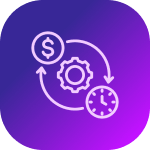
Finally, logistics apps can provide instant access to the company’s database and facilitate barcode scanning so that freight dispatching can be streamlined. Unsurprisingly, this all boosts operational efficiency significantly.
Moreover, thanks to real-time updates and the ability to reach all the key stakeholders, logistics mobile apps ensure that your team stays on top of everything and can respond to any disruptions swiftly.
Choosing a Winning App Development Strategy
Watch our webinar to uncover effective mobile development approaches and launch your app.
Key Steps of Logistics App Development
As you can see there are multiple app development benefits when it comes to the transportation sector. So, you are likely wondering how exactly you can get started with this initiative. Let’s take a look at the step-by-step process then!
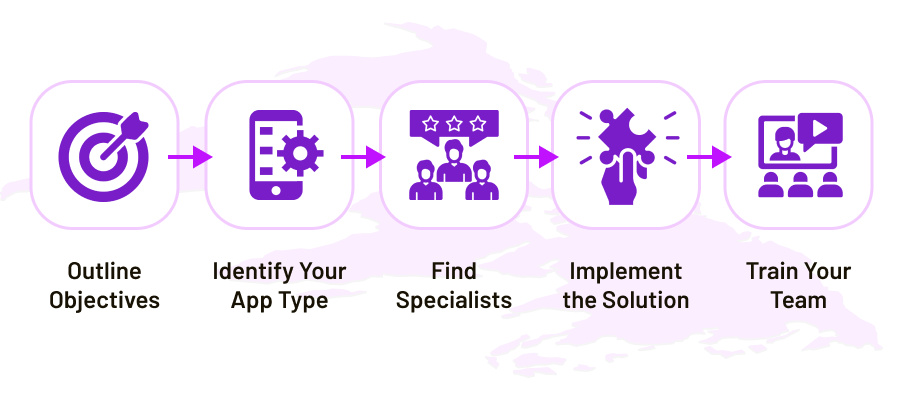
1. Outline the Key Objectives
Of course, everything begins with outlining your goals and objectives. After all, it’s hard to determine which kind of a solution you require without first establishing the challenges you want it to solve or opportunities you’d like it to provide. So, begin the entire process by asking yourself some of the following questions:
- What business issue should the application solve?
- Who will be its target users?
- What end results do I want to see following implementation?
Once you’ve solidified your answers, make sure to take note of them so that after the logistics app is deployed, you can come back to them and determine if it’s been a success. Moreover, these objectives will be crucial when you start discussions with your software development team, so definitely keep them nearby throughout the process.
Read about Explaining Your Business Idea to the Development Team
User-Driven Approach
Watch our webinar and learn the top ways of reducing poor user satisfaction, low adoption rates, and decreased loyalty.
2. Identify the Type of App You Need
Apps for logistics may vary depending on your unique needs. You might be looking for a simple inventory management tool or be on the hunt for an all-encompassing solution. That’s why it is essential to identify the type of app you need based on the objectives you’ve outlined.
If you’re looking for an all-in-one solution — spend some time outlining its core modules. Or, consider starting small, with a more specialized app, to test the waters and then build on the software further or integrate it with other important functions.
To help you determine the kind of application your business might benefit most from, let’s take a quick look at a few popular examples.
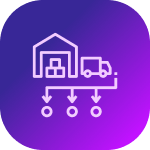
Fleet Management
A fleet management application, as the name suggests, is all about helping coordinate your transportation vehicles. As the saying goes, “when it rains, it pours”, and you sometimes find yourself tackling one issue after the next.
For instance, you might be struggling to maintain your vehicles in tip top shape and at the same time be looking for ways to minimize fuel consumption, deal with truck dispatching, and so on. This can all get extremely overwhelming. That’s why many businesses have turned to truck logistics app development which can reduce all the hassle and allow you to coordinate everything smoothly from within a single interface.
A fleet management app helps you manage all the information about your trucks with the help of the following features:
- Vehicle overview
- Driver scheduling
- Maintenance history
- AI-powered route optimization
- Fuel consumption trends
Of course, if there are other functions you’re looking for that haven’t necessarily been listed or are more unique to your business model — a custom software development partner can build those for you as well.
Learn about the Main Benefits of Custom App Implementation
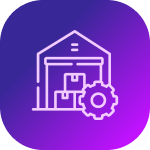
Warehouse Coordination
Another important type of software for a logistics company is definitely one that helps manage warehouses and inventory. Typically, it should include barcoding and tagging features, inventory tracking, reporting tools, and the like.
Additionally, it could be a good idea to embrace the Internet of Things and connect the application with smart sensors that could transmit inventory level data to the system and alert relevant staff whenever there is an increasing risk of under-stocks.
Learn more about IoT in Transportation and Logistics
Further, a solution reliant on big data and machine learning, could even identify patterns over time and suggest better warehouse usage and inventory optimization techniques. Thus, capitalizing on all the latest technologies and empowering you with more decision-making knowledge.
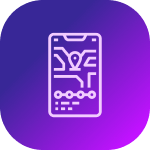
On-Demand Logistics Application
Have you ever been frustrated about your trucks traveling not fully loaded and spent your days looking for ways to maximize their load for peak productivity? Well, you’re definitely not alone which is why many transportation organizations are considering the development of on-demand mobile apps.
Not sure what these are? Well, in essence, they function sort of like an Uber for the supply chain by connecting trucks and drivers that have extra space with shippers who need some cargo delivered. Thus, allowing logistics firms to increase their income by taking on shipments that they otherwise wouldn’t have been in charge of.
Typically, these on-demand solutions allow:
- Shippers to post delivery requests by specifying the final destination, origin, load, size, and cost
- Drivers to be notified when a potentially suitable request is available so that they can accept it
- Both sides to receive real-life updates on the status of the pick-up and delivery processes
Sounds intriguing? Then, definitely consider implementing this kind of a tool into your business. It can really boost your profits in the long-run.
3. Find Suitable Specialists
Next, it’s time to find the IT specialists that will build the final solution for you and provide advice on anything you may not have thought of. Here, you can go either one of two ways — hire an in-house team or outsource development to an external vendor.
Everything depends on the unique set up and needs of your company so it’s hard to say which choice is the better one for everyone. Instead, you need to weigh the pros and cons of either decision.
With an in-house team, you get specialists who are entirely focused on your organization but it might be very time-consuming to look for them and the associated HR costs could be substantial.
On the other hand, with an outside vendor, you can get started quickly and involve the partner only to the extent that you require. However, with this approach, you may have to be flexible as the development partner is likely to be in a different location and you’ll need to work together remotely.
Whichever route you choose, just know that the IT job market is very tight at the moment and finding skilled developers, business analysts, and so on is getting more and more challenging. So, really take your time to assess which partnership approach is best for you.
Lack of Developers
Find out how to deal with the lack of IT talents without compromising project delivery.
4. Implement the Solution
Once you’ve found a great team there’s nothing stopping you from starting the development process. As an option, you could consider starting with an MVP app and then, using the iterative approach to product development, proceed to expand on it.
In terms of implementation, the sequence of events will depend on the type of app you’ve chosen, the engagement model you’ve decided to pursue, and the like. So, we won’t go too much into detail and instead simply say — don’t rush this stage and make sure you’re doing plenty of testing so that once the solution is deployed, there are fewer hiccups.
5. Train Your Team
Lastly, don’t forget to train your team on the new logistics app. After all, if they don’t use it as you had planned, the objectives you hoped to achieve might become out of reach. In fact, it’s a good idea to involve the staff that will be using the solution most frequently into the development process. That way, the IT team will make sure to build a tool with their needs top of mind.
Overall, post-deployment training is crucial to boost engagement with the application and avoid staff members rejecting it before giving it a proper shot. So, hold some training sessions, share an easy to understand how-to guide, and encourage the team to ask questions. That way, your app will start making an impact in no time.
Ready to Develop a Great App?
You’ve now learned a lot about the powers of mobile applications for the logistics sector. So, are you ready to implement this kind of a solution? Remember, it can facilitate on-the-go communication, significantly reduce paperwork, and take your operational efficiency to a whole new level.
When you’re still unsure or eager to get started — our team is here to answer any of your questions and get the ball rolling if need be. Velvetech’s specialists have spent years delivering state-of-the-art logistics app development services and would be happy to participate in your next project. Simply fill out the contact form below and we will get back to you as soon as possible.


































